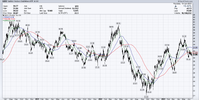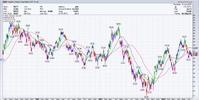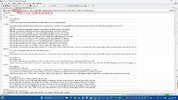- Joined
- 28 December 2013
- Posts
- 6,392
- Reactions
- 24,319
Is chart reading an edge?
Charting / Technical Analysis is merely an Attempt to "Follow the Money"
All the rest is like a Dog's breakfast to me
Charts play a big part in my way of trading, in my case I rely heavily on charting
@ducati916 the answer to whether chart reading provides an edge depends on the trader's skills and experience as @DaveTrade has commented. Some traders feel that chart analysis can provide insights into market trends and patterns, giving them a competitive advantage when making trading decisions.
Others, however, contend that chart analysis is subjective and prone to interpretation biases, and hence may not provide a dependable market advantage. Finally, the effectiveness of chart analysis may be determined by the trader's ability to accurately comprehend and implement it in their trading plan, and as @Captain_Chaza remarked, "charting is merely an Attempt to Follow the Money" which makes perfect sense to me.
Skate.
















